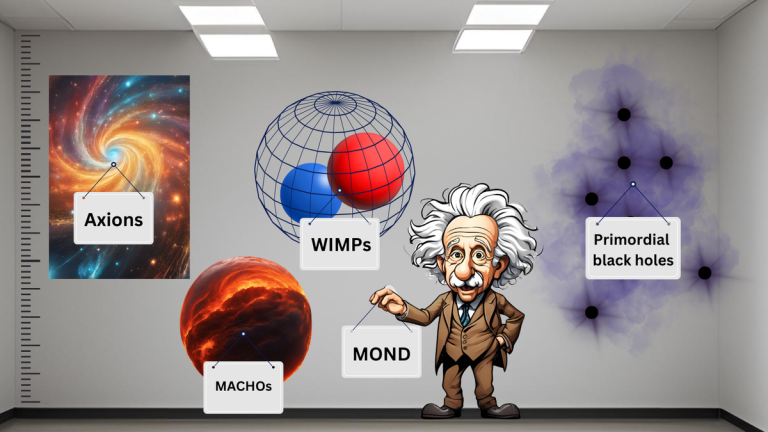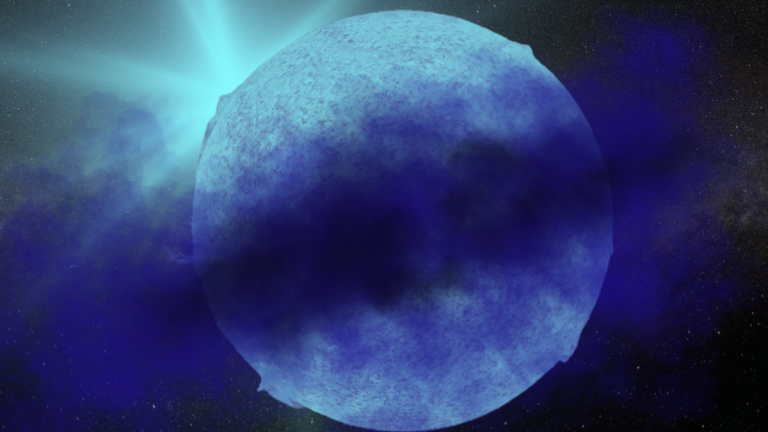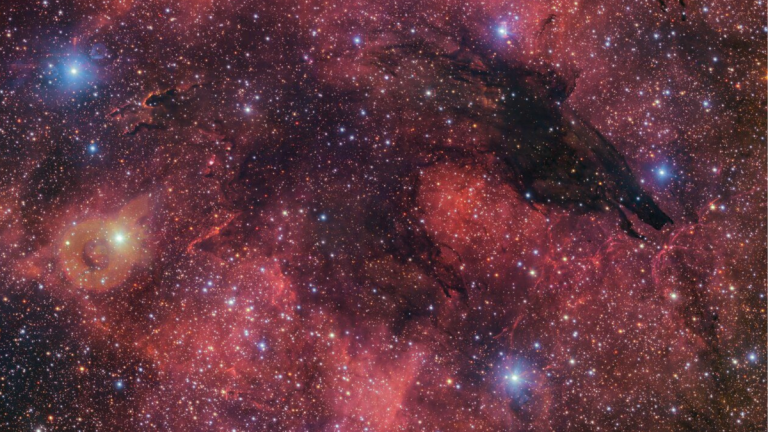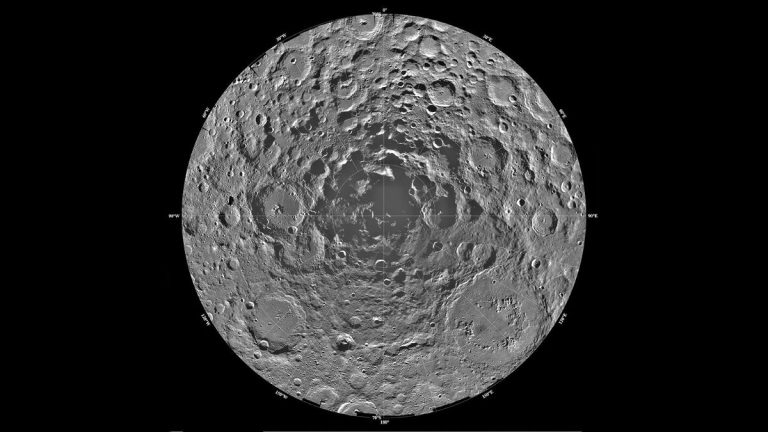
Speck of light glimpsed by Hubble is truly an enormous old galaxy, James Webb Space Telescope reveals (Image Credit: Space.com)
What was little more than a speck of light for the Hubble Space Telescope has been revealed as one of the oldest galaxies ever discovered — and the finding owes itself to none other than Hubble’s younger sibling: The James Webb Space Telescope.
The James Webb Space Telescope international “Glass” Collaboration made detailed observations of the galaxy, dubbed Gz9p3, which is seen as it was just 510 million years after the Big Bang. That’s during the relative infancy of the universe, which is now 13.8 billion years old.
The team discovered that, much like other early galaxies seen by the JWST, Gz9p3 is far more massive and mature than expected for a galaxy in the infant universe. During the ancient time period in which it’s been spotted, it already appears to contain several billion stars.
When it comes to the cosmic conundrum of how early galaxies grew to become so massive so quickly Gz9p3 could be a real puzzle. Not only is it more massive than expected, but it is around 10 times more massive than other galaxies the JWST has seen in similar eras of the universe’s history.
Related: James Webb Space Telescope complicates expanding universe paradox by checking Hubble’s work
“Just a couple of years ago, Gz9p3 appeared as a single point of light through the Hubble Space Telescope,” Kit Boyett, team member and a scientist at the University of Melbourne, wrote for the institute’s Pursuit publication. “But by using the JWST we could observe this object as it was 510 million years after the Big Bang, around 13 billion years ago.”
Gz9p3 is simply remarkable. Besides its size and maturity, its shape also reveals clues to its creation.
Was Gz9p3 created by an early galaxy merger?
Using the JWST and direct imaging, the team was able to determine that Gz9p3 has a complex shape with two bright patches that reveal its two dense nuclei. That indicates Gz9p3 was likely created when two early galaxies smashed together in the infant universe. This collision may have still been ongoing during the time at which astronomers noticed Gz9p3 with the JWST.
“The JWST imaging of the galaxy shows a morphology typically associated with two interacting galaxies. And the merger hasn’t finished because we still see two components,” Boyett explained. “When two massive objects join like this, they effectively throw away some of the matter in the process. So, this discarded matter suggests what we observed is one of the most distant mergers ever seen.”
In addition to determining the age, mass and shape of this ancient galaxy, Boyett and colleagues were able to probe deeper within Gz9p3 to examine the stellar population of these colliding galaxies. Because young stars are brighter than their older counterparts, they usually dominate galaxy images, especially those that are so distant their light has been traveling to Earth for billions of years.
“For example, a young bright population sparked by the galaxy merger, less than a few million years old, outshines an older population already over 100 million years old,” Boyett continued.
The Glass collaboration worked around this by taking spectroscopic observations of Gz9p3 as well as by tapping into direct imaging. Spectroscopy can be used to determine the elements that make up stars; because young and old stars have different compositions, this allowed the researchers to separate the two categories in this early galaxy.
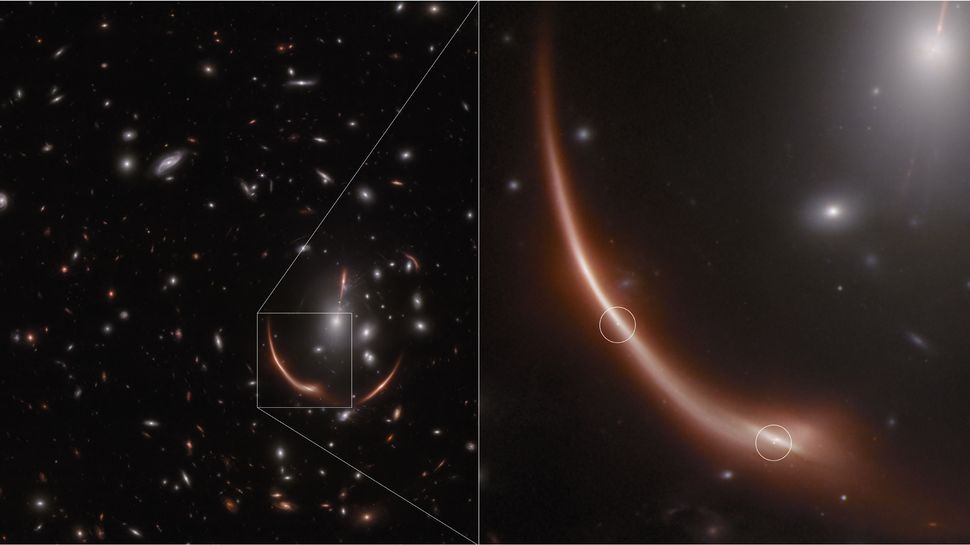
Older stars have worked their way through the hydrogen supply in their cores, having already fused it all into helium and then fusing this helium to create even heavier elements, which astronomers call “metals.” This means older stars are richer in metals than younger stars, which are still dominated by hydrogen and some helium.
The study team used the JWST to detect specific elements in the older star population of Gz9p3. These target elements included silicon, carbon and iron, the latter of which is the heaviest element that can be synthesized by stars. This means these stars, when they died in supernova explosions, would have enriched the early universe with metals. Much of this metal content would have gone on to become the building blocks of the next generation of stars.
In addition, the team discovered that the population of old stars in Gz9p3 was much larger than previously suspected. This means that, while astronomers have been aware of this cycle of stellar life and death and the increasing metal enrichment of subsequent generations of stars, the Gz9p3 observations indicate galaxies may have become “chemically mature” faster than had been suspected previously.
“These observations provide evidence of a rapid, efficient build-up of stars and metals in the immediate aftermath of the Big Bang, tied to ongoing galaxy mergers, demonstrating that massive galaxies with several billion stars existed earlier than expected,” Boyett wrote.
A history of violence
Galaxies that sit isolated from their galactic counterparts do form stars, but the process is slow and ends when that galaxy exhausts its reservoir of gas and dust, the materials that form stars.
For galaxies close to each other, the process of star formation can be sped up and even revived after it has drawn to a halt. That’s because when these galaxies are drawn together by a mutual gravitational attraction, they collide. The merger then causes an inflow of fresh gas that kickstarts a period of rapid star birth called a “starburst,” meaning mergers provide an excellent way for galaxies to rapidly grow their stellar populations.

Most large galaxies in the universe have grown this way; our own galaxy, the Milky Way, shows a history of mergers itself. For instance, it has been involved in the cannibalization of smaller satellite galaxies that once orbited it. The Milky Way currently forms stars at a stunted rate, but this will change when it collides with our neighboring galaxy, Andromeda, in around 4.5 billion years. This will cause an influx of gas that kicks off a fresh bout of starburst.
Thanks to observations of Gz9p3, astronomers are getting the message that this channel for rapid mass accumulation and star birth was a bigger factor in the early universe than predicted.
“These observations of Gz9p3 show that galaxies were able to accumulate mass quickly in the early universe through mergers, with star formation efficiencies higher than we expected,” Boyett explained. “This and other observations using the JWST are causing astrophysicists to adjust their modeling of the early years of the universe.
“Our cosmology isn’t necessarily wrong, but our understanding of how quickly galaxies formed probably is, because they are more massive than we ever believed could be possible.”
The team’s research was published on March 7 in the journal Nature Astronomy.


